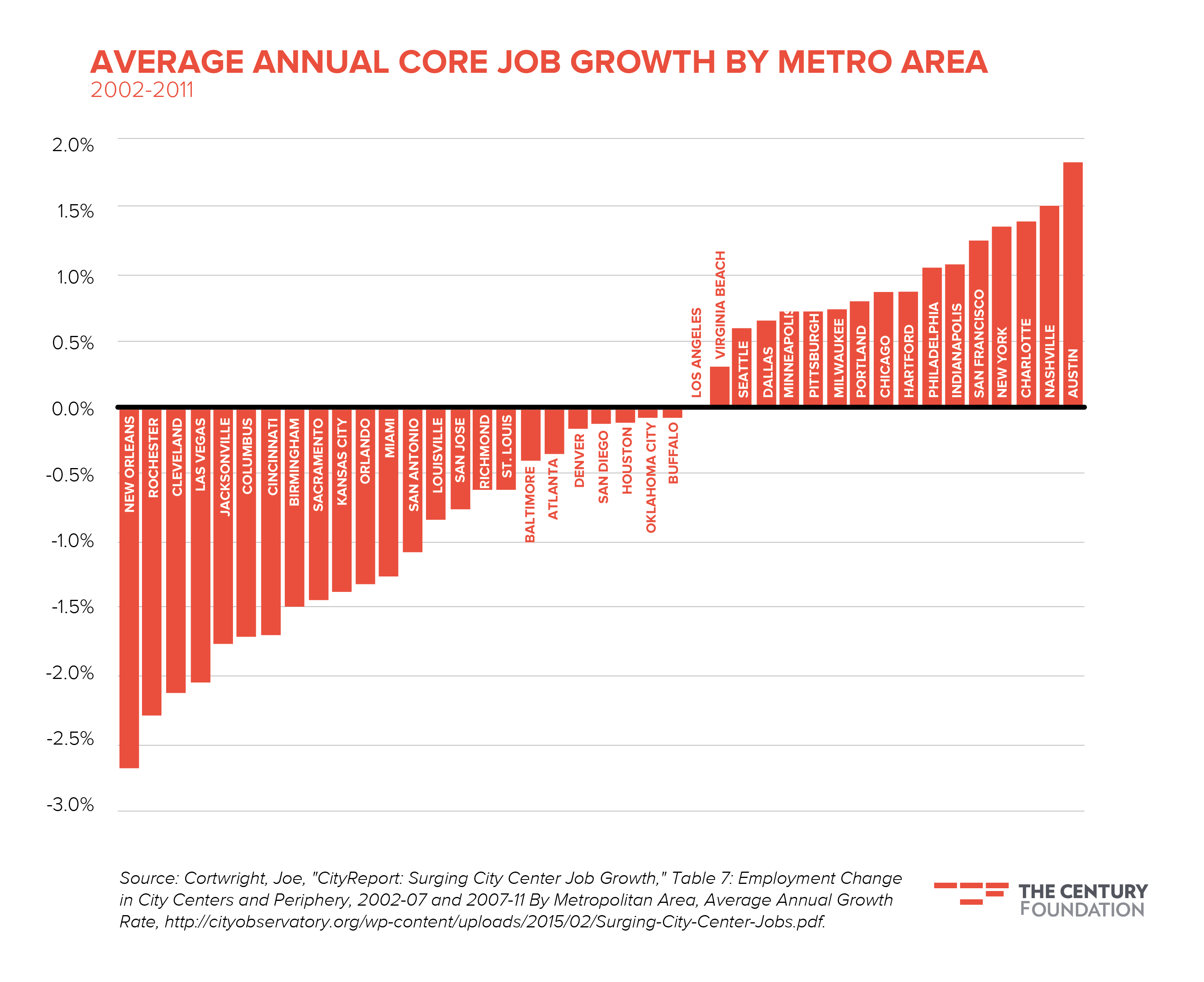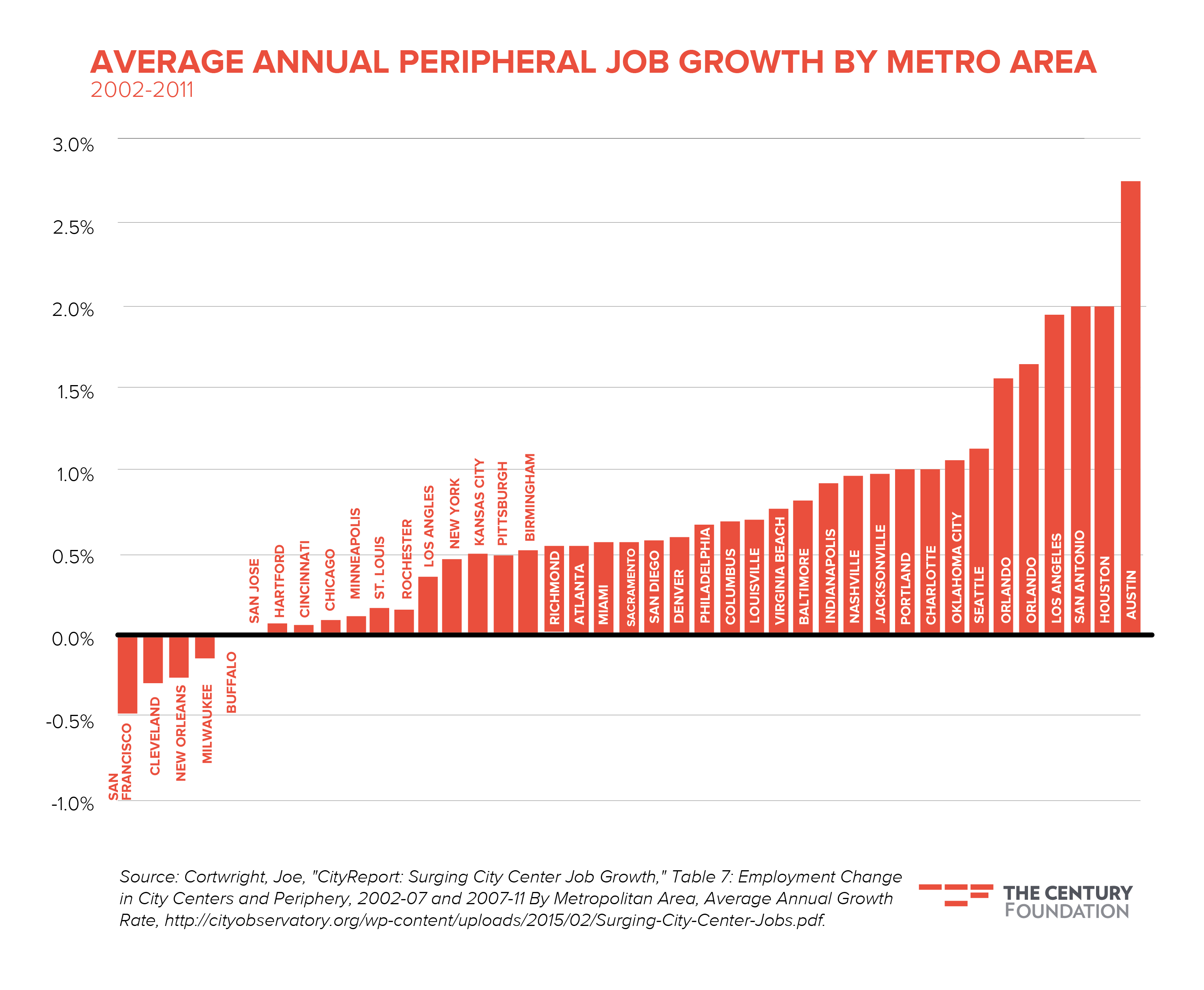Fool for the city: How we're over-hyping America's urban comeback
Despite claims to the contrary, suburban growth is still going strong. And that's a bad thing.


Pick up a newspaper or browse the internet, and it's easy to conclude that we're in a golden age for the American city.
After decades of urban blight and suburban sprawl, the tables seem to be turning. Colonies of hipsters have revived industrial neighborhoods of Brooklyn. Salt Lake City and Los Angeles are investing in world-class mass transit. Even Detroit is apparently poised for rejuvenation.
But a new study on job growth in major metropolitan areas poses a troubling question: Are we so enamored with the idea of the "urban comeback" that we're actively ignoring evidence to the contrary?
The Week
Escape your echo chamber. Get the facts behind the news, plus analysis from multiple perspectives.

Sign up for The Week's Free Newsletters
From our morning news briefing to a weekly Good News Newsletter, get the best of The Week delivered directly to your inbox.
From our morning news briefing to a weekly Good News Newsletter, get the best of The Week delivered directly to your inbox.
Winners and losers
The report, from the think tank City Observatory, examines the geography of job growth in 41 U.S. urban areas between 2002 and 2011.
It concludes that after years of dominant "peripheral" job growth, a shift occurred in 2007 that saw the bulk of new employment move back toward urban "cores" — the area within three miles of a city's central business district.
Media outlets seized on the news as the latest victory for cities over the suburbs. "Suburbs Are Out, Downtown Is In," declared Bloomberg, while Grist deemed the finding "a major departure," and the New York Times's Upshot blog concluded that "employers are following" people who "increasingly choose to live in cities."
A free daily email with the biggest news stories of the day – and the best features from TheWeek.com
The headlines make the report sound pretty conclusive. But a closer look at the data shows that the trend is actually much less widespread than we'd like to believe.
Yes, on average, the United States moved away from the suburbanization of jobs during the recession years.
But the city-specific data are much more of a mixed bag. Twenty of the 41 cities in the study — just under half — actually saw peripheral job growth that was equal to or greater than core growth even during the recession, in defiance of the national trend.
The statistics are even more discouraging when analyzing the entire 10-year period covered in the study. From 2002 to 2011, 24 of the 41 cities lost jobs in the central business district. Just 11 of them saw greater annual growth in the core than on the periphery.


Uneven growth
The fact remains that in terms of where people work, much of the country is significantly more suburban than even 15 years ago. And in many places, the recession did nothing to change this trend.
That's problematic for several reasons. For starters, we should expect core employment to fare better during economic crises in almost every city, thanks to the stability of sectors such as government and health care, which tend to locate downtown.
Rather than celebrate the fact that half of the cities studied did show downtown stability, we should be questioning why half of them didn't.
Employment sprawl also poses long-term issues. Jobs in the suburbs usually require cars, placing a burden on the environment and on workers' budgets (not to mention their health). They feed into a vicious circle of destructive land-use policy by encouraging new housing on the periphery rather than closer to downtown. And they are poisonous for public transportation agencies, since the lack of job density means they must offer more routes that each serve fewer people.
Moving forward
So what are the cities that did see strong core job growth doing right?
Only five metro areas in the study showed stronger core growth both before and during the recession. Two of them, New York and San Francisco, are known for their excellent mass transit, high population density, and walkable neighborhoods. Two more, Indianapolis and Nashville, are famous for their commitment to regional decision-making that doesn't pit cities against suburbs.
But the fifth is Hartford, Conn., which has neither strong regional planning nor the amenities that make people flock to New York or San Francisco.
Meanwhile, many cities in the booming south and southwest continued to see their cores hollow out during the recession — but not all of them. Jobs in Houston and San Antonio left downtown during the crisis, but sprawling Charlotte actually experienced significant growth in the city center.
Patterns of job growth don't occur in a vacuum — they happen as the result of land use, transportation, and housing policies, not to mention political expediency. But if the City Observatory report shows us anything, it's that understanding these trends is best done on a city-by-city basis.
Because for all the hype about America's urban comeback, it's clear that the comeback isn't happening everywhere. It's a complicated equation that determines where job growth occurs. And much of it remains unsolved.
Jacob Anbinder is a policy associate at the Century Foundation, the New York-based think tank. He writes about transportation, infrastructure, and urban affairs.



